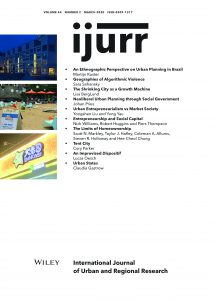Unsanctioned tent cities are increasing in number in cities throughout the western United States. Scholars explain the phenomenon as homeless people asserting their ‘right to the city’ or as ‘managed marginality’. These explanations capture much of the socio‐political relationship between local government and homeless populations, but do not explain the long‐term persistence of tent cities and the fluctuating nature of their visibility. A spatial history of informal encampments in Sacramento at three key moments—the founding of the city, the Great Depression and the Great Recession—reveals a long‐term ebb and flow of tent cities occupying close‐to‐the‐center, urban vacancies. Urban vacancies arise from the partitioning of the city into specific purposes, places and people, a taken‐for‐granted perception of how cities should be. The visibility of tent cities disrupts this aesthetic notion of stability and growth as homeless people use the tent to protest their isolation and exclusion.

